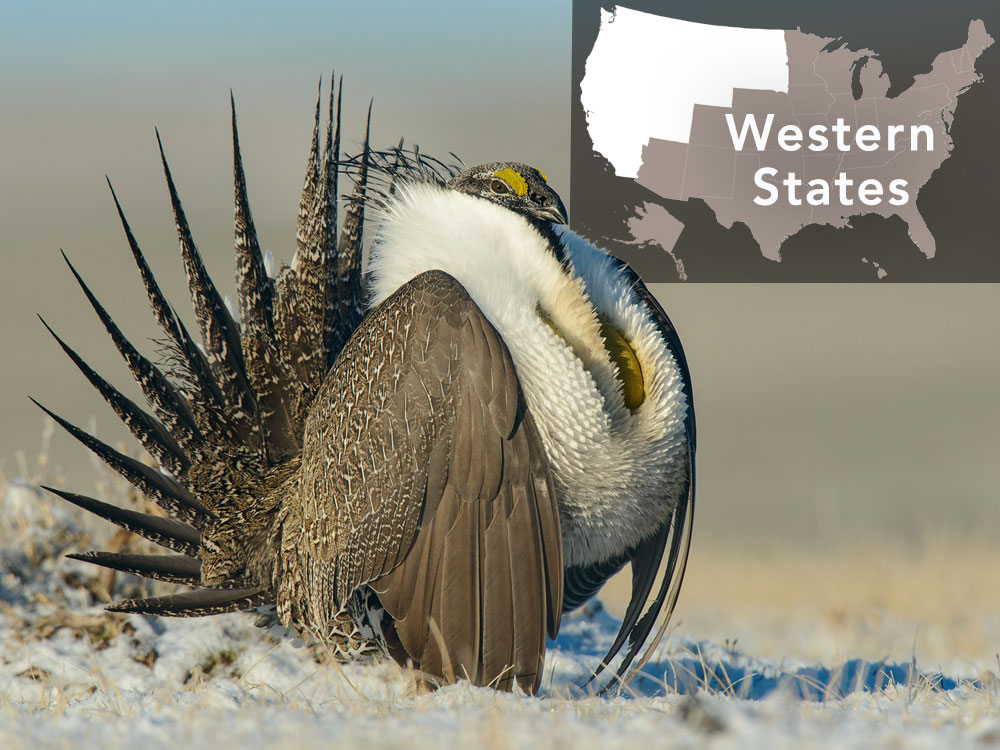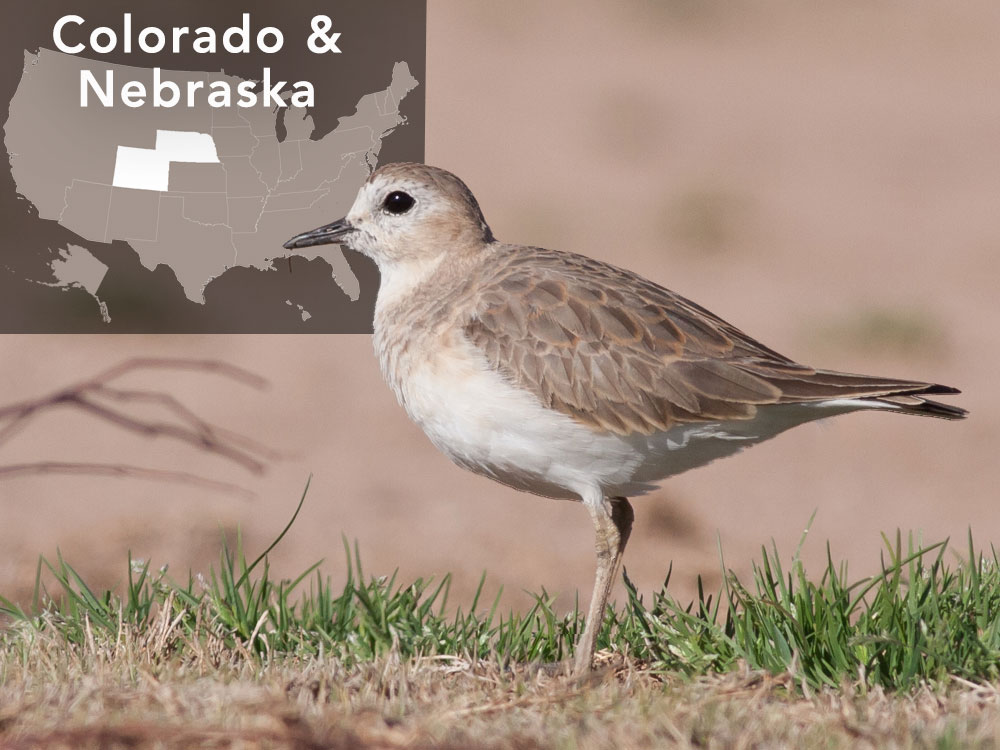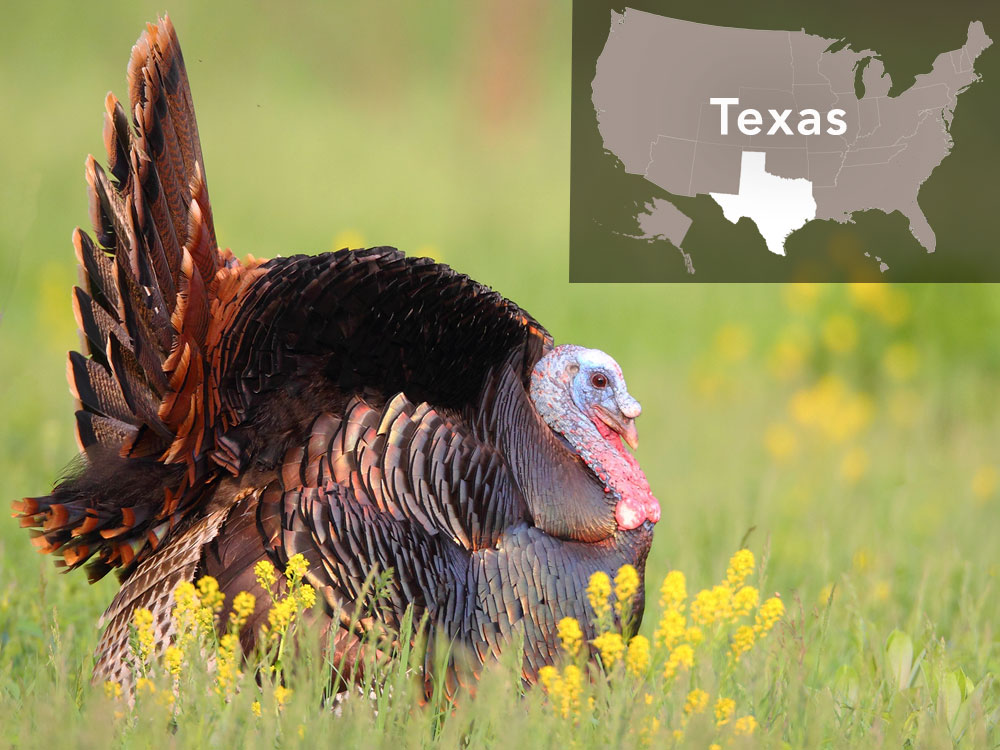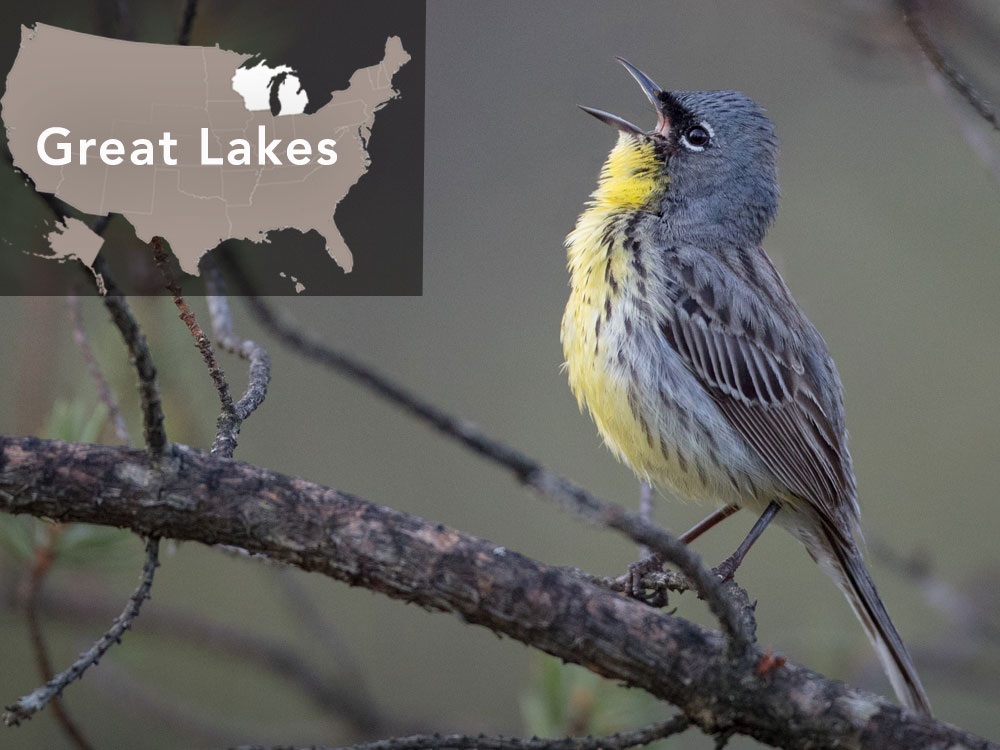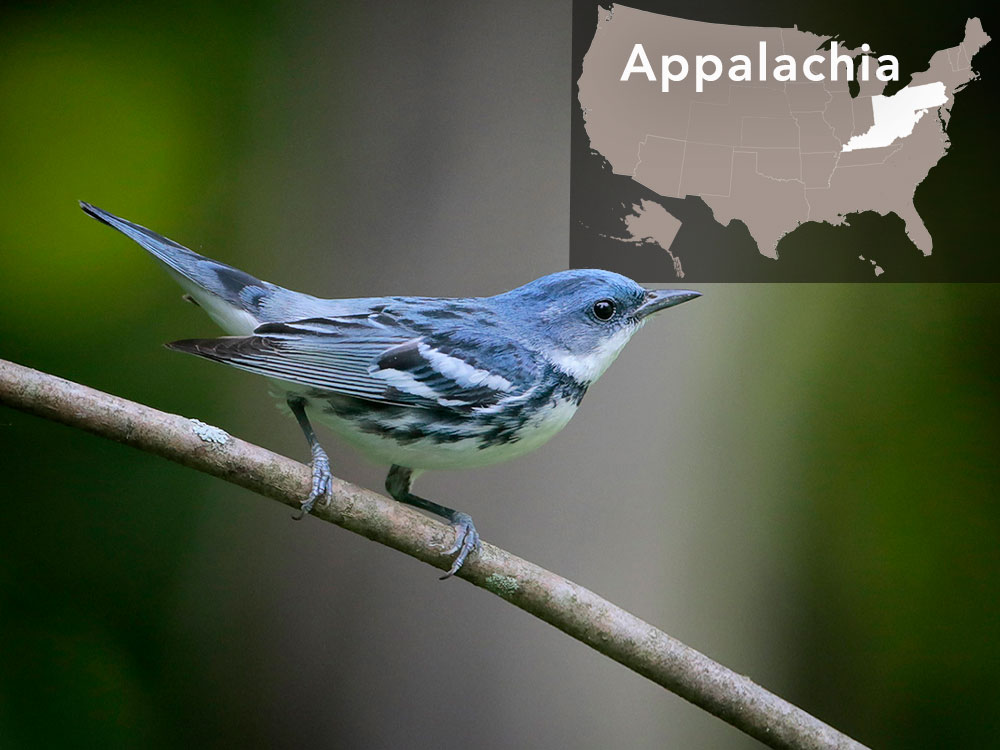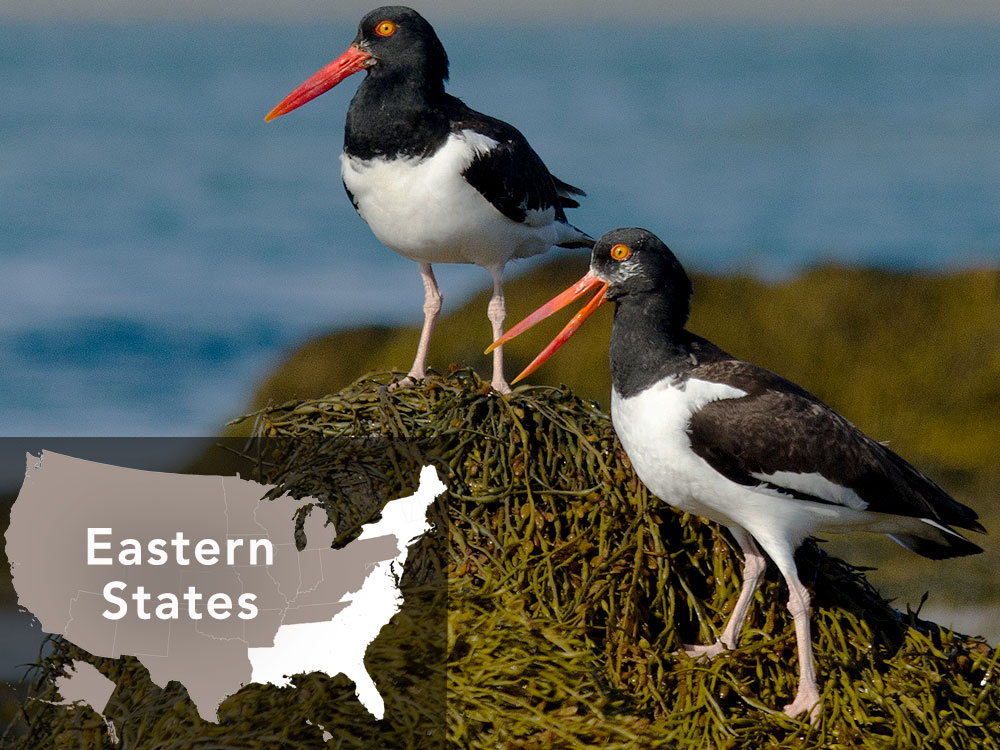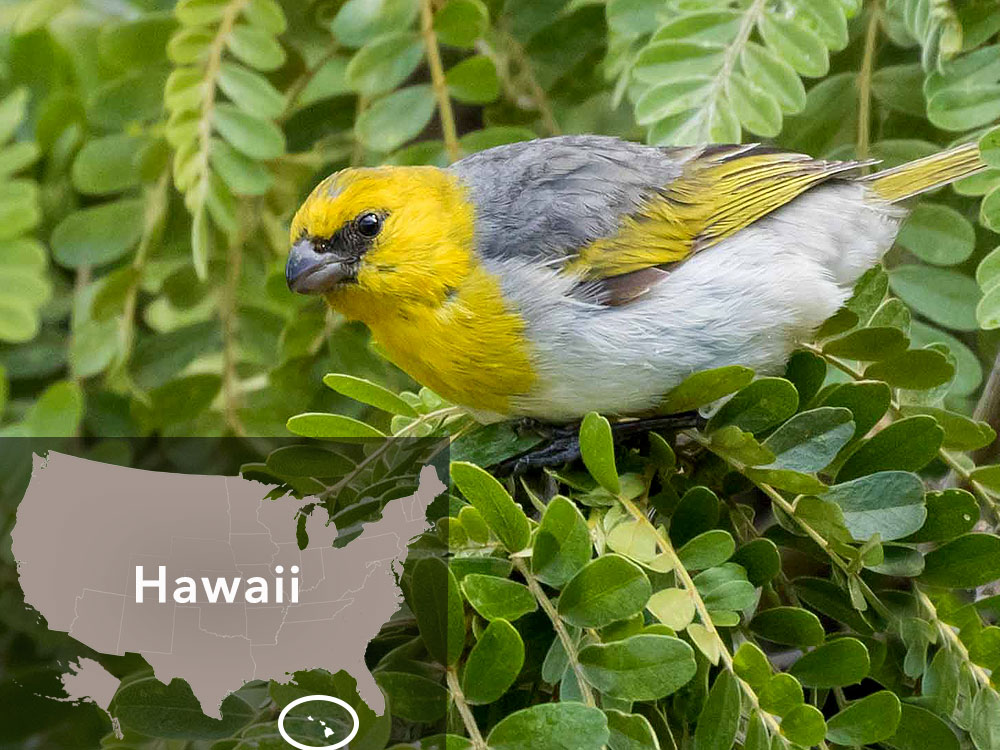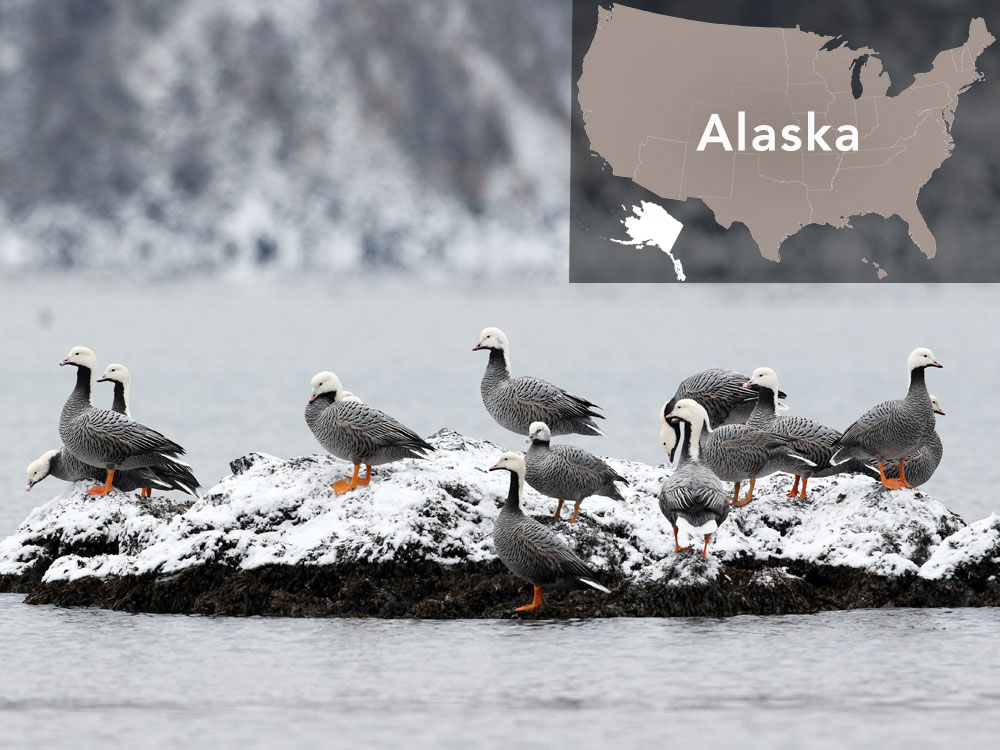Funding for Conservation Is Money Well Spent
When we invest in conservation, we see wildlife population increases and endangered species recovery. Additional funding will allow states to replicate conservation successes across thousands of other species of greatest conservation need.
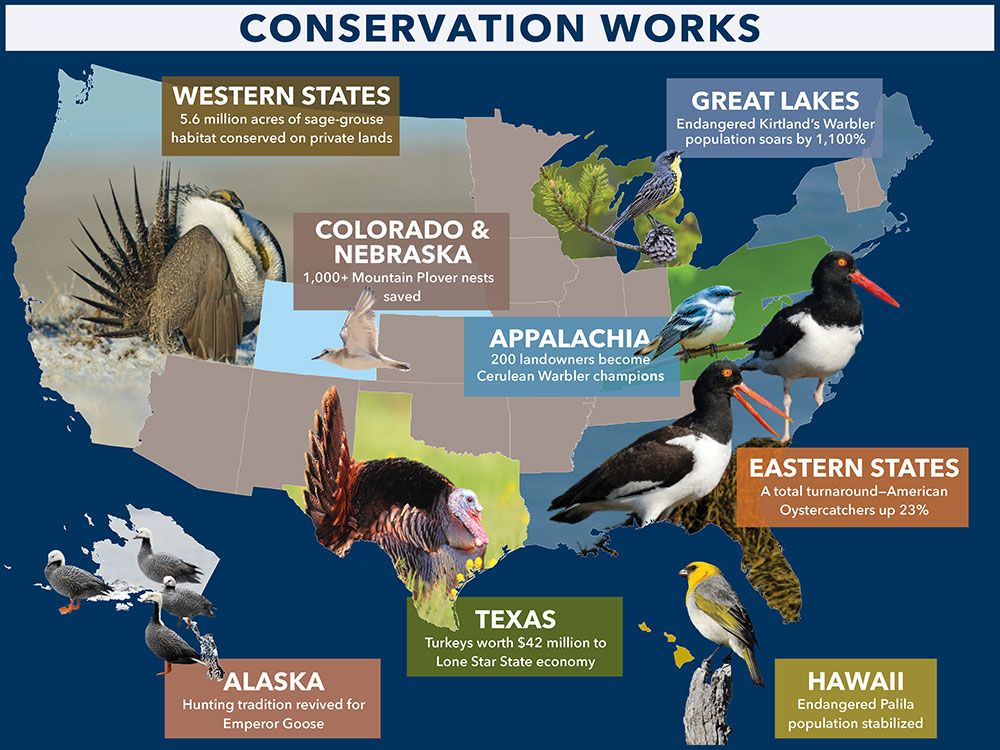
Click through the slideshow for examples of state conservation successes made possible by federal investment. Additional details about each region are below. 
Western states have conserved 5.6 million acres of sage-grouse habitat on private land. Photo by Gerrit Vyn. 
In Colorado and Nebraska, 1,000+ Mountain Plover nests have been saved. Photo by Tom Johnson/Macaulay Library. 
In Texas, Turkeys are worth $42 million to the Lone Star State economy. Photo by Brendan Klick/Macaulay Library. 
In the Great Lakes,endangered Kirtland’s Warbler population soars by 1,100% Photo by Ian Davies/Macaulay Library. 
In Appalachia, 200 landowners become Cerulean Warbler champions. Photo by Greg Lavaty via Birdshare. 
Eastern states see a a total turnaround—American Oystercatcher populations are up 23%. Photo by Alix d’Entremont/Macaulay LIbrary. 
In Hawaii, the endangered Palila population stabilized. Palila by Brad Argue/Macaulay Library/. 
In Alaska, the hunting tradition is revived for Emperor Geese. Photo by Andrew Spencer/Macaulay Library.
Western States: Sage-Grouse
Western states have conserved more than 5.6 million acres of sage-grouse habitat on private land.
- Steep population declines put Greater Sage-Grouse on the brink of ESA listing.
- The Sage Grouse Initiative (a USDA Natural Resources Working Lands for Wildlife program) and the Intermountain West Joint Venture led the restoration of millions of acres of sage-grouse habitat across 11 western states, thanks to collaborations between federal and state agencies and more than 1,100 private ranchers.
- These actions resulted in the avoidance of ESA listing in 2015, saving local economies from California to the Dakotas up to $5 billion in annual costs, according to Western Energy Alliance.
- Additional support would address the conservation needs of hundreds of other sagebrush wildlife species.
Colorado & Nebraska: Mountain Plover
In Colorado and Nebraska, 1,000+ Mountain Plover nests have been saved.
- Mountain Plovers nest in farm fields, where eggs are at risk of being plowed under, or on ranching lands.
- Mountain Plover was declared a priority bird species for the Playa Lakes Joint Venture; several hundred landowners joined a program to find and flag nests, allowing farmers and ranchers to work their land without disrupting breeding plovers.
- ESA listing was avoided. Some landowners became birding-tour leaders for the Mountain Plover Festival in Karval, Colorado, which has generated $75,000 for the local economy.
- Additional support would scale up this pilot program throughout the Mountain Plover’s range.
Texas: Wild Turkey
In Texas, Wild Turkeys are worth $42 million to the Lone Star State economy.
- America’s classic game bird was nearly extinct in North America 100 years ago.
- Federal and nonprofit partners worked with state agencies on stocking and reintroduction programs. Today Texas has the largest turkey population in the U.S. (600,000+ turkeys).
- Turkeys generate $42 million in economic activity every year in Texas, and $1.8 billion nationwide.
- Additional support would enable Texas and three related Joint Ventures to duplicate this success for Northern Bobwhite quail, another classic game bird trending toward extinction.
Great Lakes: Kirtland’s Warbler
In the Great Lakes, the endangered Kirtland’s Warbler population has soared by 1,100%.
- Kirtland’s Warbler was one of the first birds to be listed by the Endangered Species Act in 1973; they were down to the last 150 breeding pairs.
- State and federal agencies partnered to implement a recovery program that restored jack-pine habitat and controlled nest parasitism.
- Population grew to 2,500+ breeding pairs in Michigan, with Kirtland’s Warblers now expanding into Wisconsin and Ontario, successfully meeting the delisting criteria.
- Additional support would continue state-led conservation work for Kirtland’s Warblers after delisting, so they don’t decline again.
Appalachia: Cerulean Warbler
In Appalachia, 200 landowners became Cerulean Warbler champions.
- With populations down more than 70%, this warbler is fast headed toward ESA consideration.
- The Appalachian Mountains Joint Venture launched a sustainable forest management program to improve warbler habitat and forest health.
- 200+ private landowners enrolled in the program to restore warbler habitat on thousands of acres of forestlands.
- Additional support would enable more private landowners to enroll and stop warbler declines in Appalachia.
Eastern States: American Oystercatcher
Eastern states see a a total turnaround—American Oystercatcher populations are up 23%.
- 10 years ago, oystercatcher populations were plummeting along the East Coast; ESA listing would have impacted coastline communities, including some of America’s favorite beaches.
- Instead, the USFWS Northeast Division of Migratory Birds and 13 state agencies coordinated a conservation strategy with 16 states that reversed oystercatcher declines. The population is now up 20%.
- Benefits beyond birds include improved fish nursery habitat and cleaner public beaches.
- Additional support would build on the oystercatcher success, funding the Atlantic Flyway Shorebird Initiative to avert ESA listings for 15 other declining shorebirds.
Hawaii: Palila
In Hawaii, the endangered Palila population has stabilized.
- Almost two-thirds of native Hawaiian forest bird species, including the Palila, are listed under the Endangered Species Act.
- A coalition of federal, state, and private partners have restored 6,500 acres of forest to protect crucial Palila habitat.
- Invasive species control and habitat management are keeping Palila and other Hawaiian forest bird species alive for now.
- Additional support would sustain programs essential to preventing extinctions in Hawaii.
Alaska: Emperor Goose
In Alaska, conservation measures for Emperor Geese succeeded to the point that the hunting tradition was revived.
- Unique goose species found only in Alaska and the Russian Far East, but after a 50% population decline, hunting was halted in the 1980s.
- Populations rebounded after federal and state agencies partnered with native groups on an Emperor Goose conservation program.
- The population more than doubled by 2018, allowing a regulated sport and tribal traditional hunting program to be reinstated.
- Additional support for state and tribal agencies would enable continued recovery for Emperor Geese.

